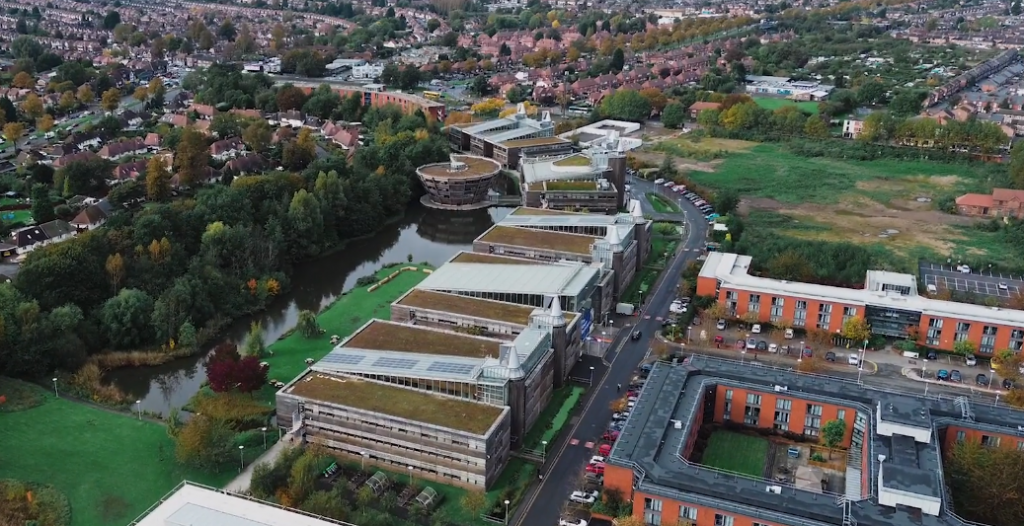
January 8, 2024, by sustainablenottingham
Adapting the university to a changing climate
The evidence is clear: our planet is warming, and global heating is locked in for many decades, bringing extreme weather and climate shocks. The university is looking to understand the risks of climate change to our campuses and potential actions to alleviate any impacts.

What is adaptation?
Climate adaptation means taking targeted actions to address known and potential risks to natural and human systems from the impacts of climate change. As the overall climate risk facing the UK increases, the level of adaptation required to reduce its effects must also increase.
UK Climate Projections 2018 (Met Office) predict that in the coming decades the UK will see warmer, wetter winters, and hotter, drier summers overall as result of temperature increases due to climate heating. Current global policies and pledges in place around the world are projected to result in about 2.7°C global warming above pre-industrial levels (Climate Action Tracker 2022).
We know that carbon reduction action is now not enough on its own to tackle the climate crisis. Even if all carbon emissions stopped tomorrow, the planet would continue to warm well into this century due to a historic build-up of carbon dioxide in the earth’s atmosphere. Adaptation action is needed too, alongside tackling emissions, to deal with the impacts of a warming climate.
Some examples of adaptation include green roofs and walls which help lower temperatures within buildings, flood protection, planting of trees to create shade, emergency and business continuity planning, and rainwater collection and storage for use during times of drought.
Why is adaptation important?
- It makes financial sense – studies have shown that adapting now is much more cost effective for organisations rather than leaving it until it’s too late.
- Business continuity and organisational resilience – ensuring we can continue operate even during extreme weather conditions, such as storms and heatwaves.
- It delivers co-benefits – Adaptation action can address multiple issues at the same time, such as biodiversity enhancement and natural spaces that improve well-being
- Current and future regulatory requirements – companies are increasingly being asked to show what are they doing to prepare for climate risks and to address nature loss. This may include the university in the future, so it is helpful to be prepared for potential future reporting requirements.
What is the university doing to adapt?
We recently carried out a project involving a climate risk assessment of Jubilee, University Park and Sutton Bonington campuses to gain a deeper understanding of the likelihood and impact of physical climate risks as a result of climate change on those sites. We looked at the potential impacts of things like heat stress, drought, flooding, and wildfire, among other things.
We want to use these assessments to develop strategies and design interventions across our estate focused on managing the negative effects of extreme weather events. We can use the findings of the project to target high risk areas and plan preventative actions to reduce risk.
Here is short video created by the project consultants: Nottingham University – the impacts of climate change.
Could your research inform this work? Get in touch: sustainability@nottingham.ac.uk.
No comments yet, fill out a comment to be the first


Leave a Reply